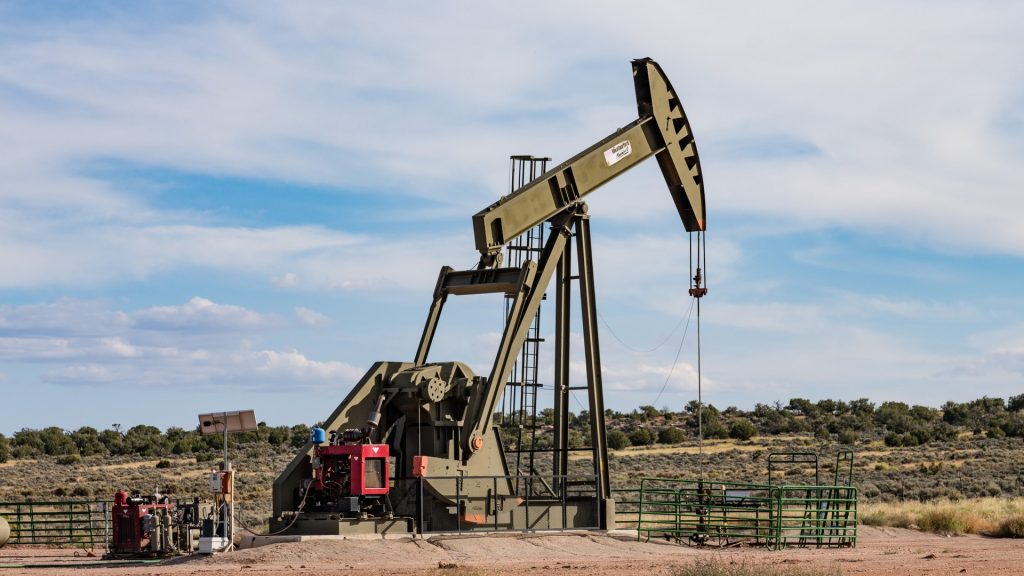Oil and gas leases earn $22.8 million, but some taxpayers doubt benefits

The Trump administration generated $22.8 million in revenue from the latest auction to lease public land for oil and gas exploration. But a policy decreasing the amount of royalty payments returned to taxpayers has reignited debate over oil and gas drilling on public lands.
The Bureau of Land Management (BLM) announced that it had leased 20,304 acres of federal land in Louisiana, Michigan, Mississippi and Utah. About 19,000 acres of the leased land are located in Utah, a state where 64.4% of the land is federally owned.
Utah saw increased interest in the September lease, with the BLM accepting bids for 14 out of 15 parcels offered. That’s up from 2023, when only 3 out of 14 parcels offered had received bids. In a press release, the bureau credited the “One Big, Beautiful Bill,” which became law in July and lowered the royalty fees oil and gas companies have to pay from 16.67% to 12.5%. However, some groups are criticizing the move, arguing that it gives away public land without offering taxpayers enough in return.
Kate Groetzinger, communications director at the nonprofit Center for Western Priorities, said the new royalty rate amounts to “letting companies lock up lands while ripping off taxpayers.”
An analysis by the nonprofit Taxpayers for Common Sense found that in the latest round of Utah leases, taxpayers could lose $230 million in royalty payments that would have been available under the previous royalty rate.
What are royalties for oil and gas drilled on public land?
When companies lease federal land for oil and gas drilling, they pay the government in two ways. First, there’s the bid placed per acre of land the company wants to lease. Leases typically last for 10 years, and companies also pay a yearly rent.
Unbiased. Straight Facts.TM
In 2024, about 611 million barrels of oil were produced on federal land. That’s over 3x more than a decade earlier.

The second way companies pay is by passing on a portion of the revenue generated from oil and gas drilled on federal lands back to the government. These are the royalties. For decades, the royalty rate was 12.5%. In 2022, with Democrats in control of Congress, the Biden administration raised the royalty rate to 16.67% as part of the Inflation Reduction Act.
This summer, Congress lowered the rate back to 12.5% as part of the budget reconciliation bill President Donald Trump signed on July 4. The bill also reduces the rental rate that companies leasing federal land need to pay each year.
In a press release, the BLM stated the change “reduces the cost of doing business on public lands, making oil and gas development more economically attractive to industry.”
How has oil and gas production on public land changed?
In 2024, about 611 million barrels of oil were produced on public land — more than three times the amount produced a decade ago.
The nonprofit Center for Western Priorities cites these figures as evidence that the higher royalty rate was not hindering production. Most oil production comes from leases issued decades ago, the group said.
The group also points to a high number of acres that are being leased, but oil and gas companies are not utilizing them for production. In 2024, out of 22 million acres leased, 9.7 million were not under production.
Groetzinger said the Biden administration’s changes were intended to “deter oil companies from leasing land that they have no intention of drilling on and to bring in a fair return” to taxpayers. “Congress and President Trump have reverted to the irresponsible leasing practices of the past,” she said.
The BLM, however, contends that even greater gains will come from the new policy and points to the successful lease in Utah as evidence. The lower royalty rate will “spur additional leasing and drilling activity, which in turn supports increased domestic energy production and strengthens U.S. energy security,” the bureau said.
The post Oil and gas leases earn $22.8 million, but some taxpayers doubt benefits appeared first on Straight Arrow News.





